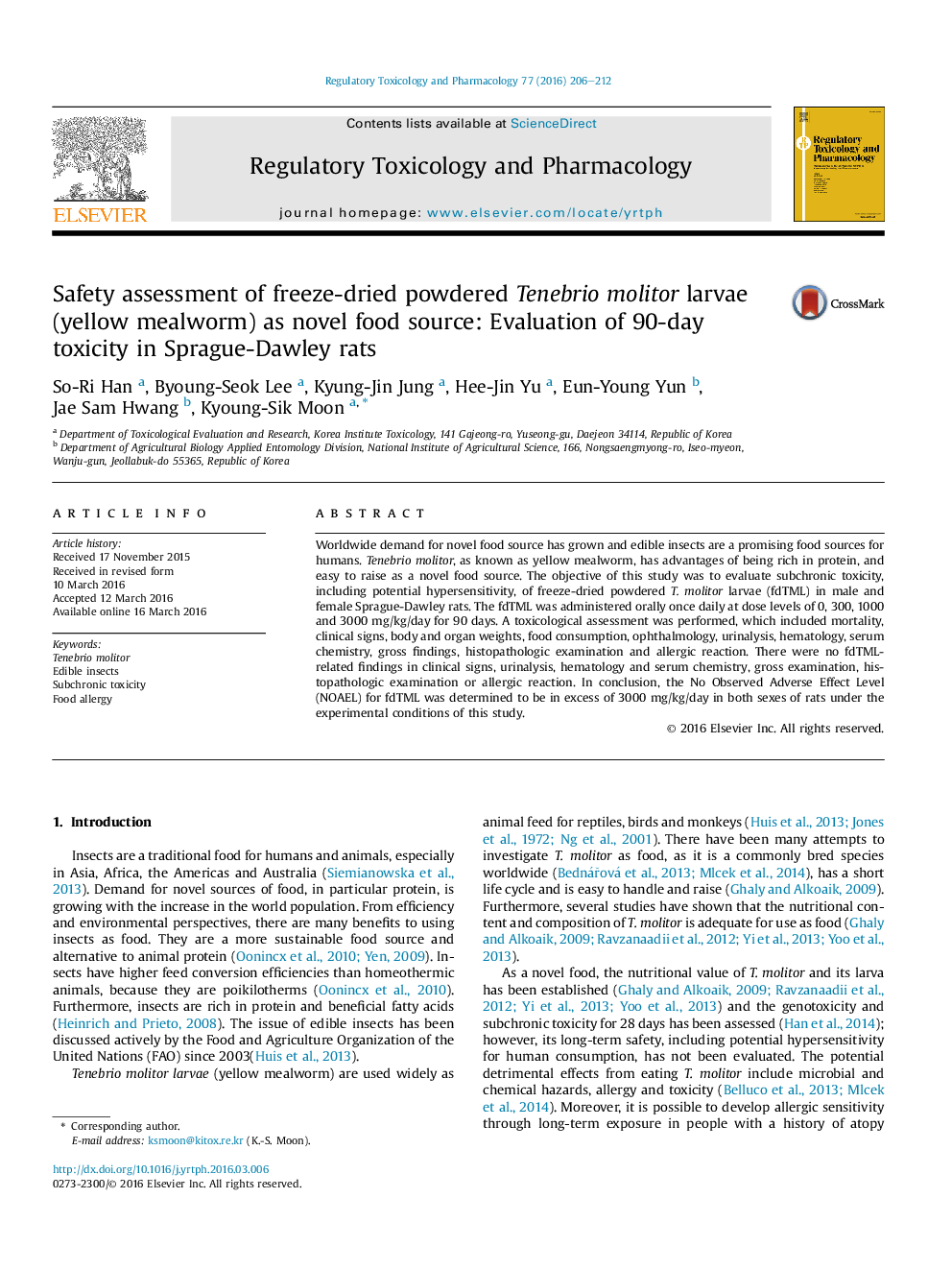| Article ID | Journal | Published Year | Pages | File Type |
|---|---|---|---|---|
| 5855994 | Regulatory Toxicology and Pharmacology | 2016 | 7 Pages |
â¢Subchronic toxicity including potential hypersensitivity of freeze-dried powdered Tenebrio molitor larvae was investigated.â¢Toxicity findings and serum IgE and histamine changes were not observed.â¢The NOAEL for freeze-dried powdered T. molitor larvae was determined as in excess of 3000 mg/kg/day.
Worldwide demand for novel food source has grown and edible insects are a promising food sources for humans. Tenebrio molitor, as known as yellow mealworm, has advantages of being rich in protein, and easy to raise as a novel food source. The objective of this study was to evaluate subchronic toxicity, including potential hypersensitivity, of freeze-dried powdered T. molitor larvae (fdTML) in male and female Sprague-Dawley rats. The fdTML was administered orally once daily at dose levels of 0, 300, 1000 and 3000 mg/kg/day for 90 days. A toxicological assessment was performed, which included mortality, clinical signs, body and organ weights, food consumption, ophthalmology, urinalysis, hematology, serum chemistry, gross findings, histopathologic examination and allergic reaction. There were no fdTML- related findings in clinical signs, urinalysis, hematology and serum chemistry, gross examination, histopathologic examination or allergic reaction. In conclusion, the No Observed Adverse Effect Level (NOAEL) for fdTML was determined to be in excess of 3000 mg/kg/day in both sexes of rats under the experimental conditions of this study.
